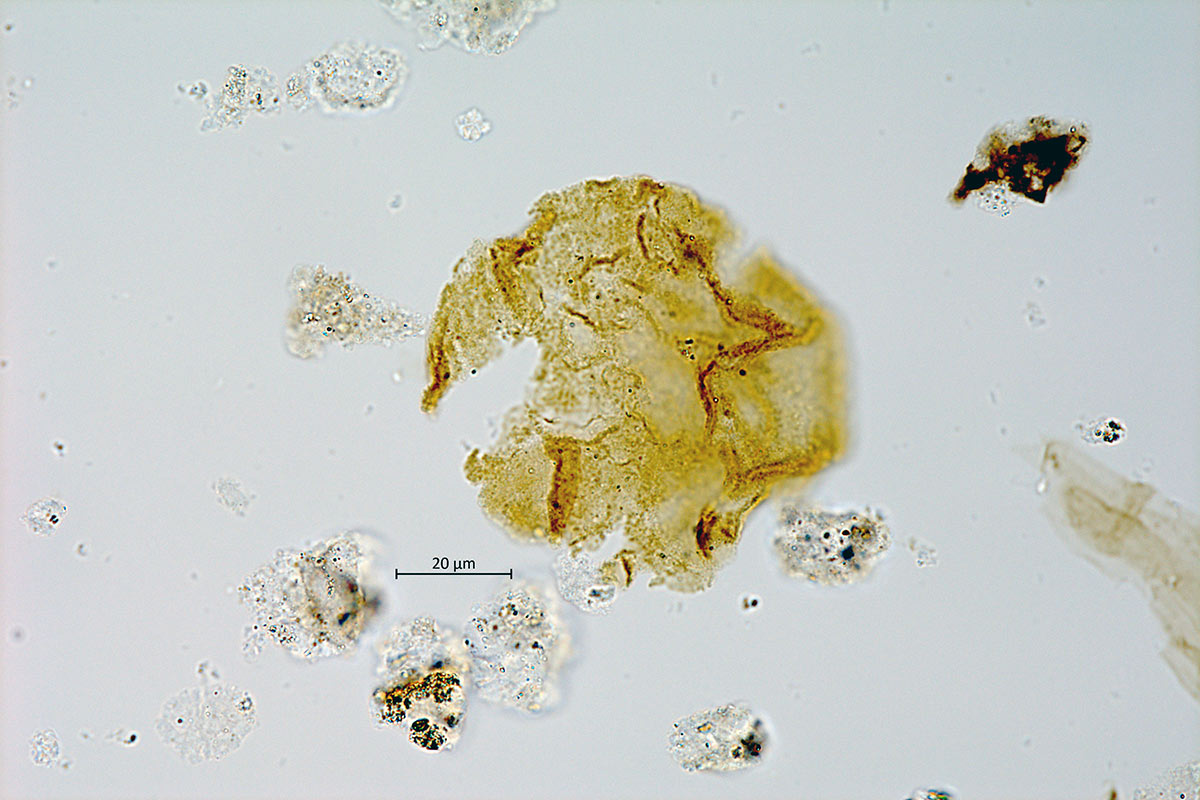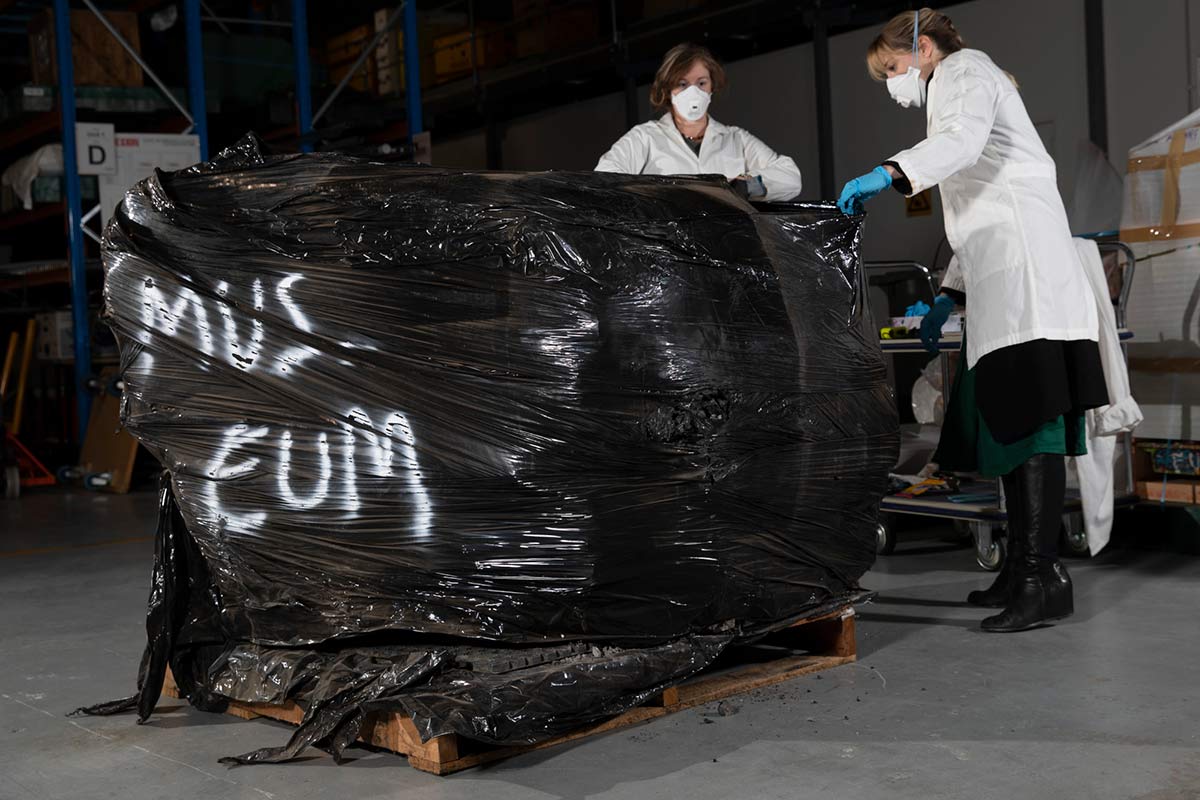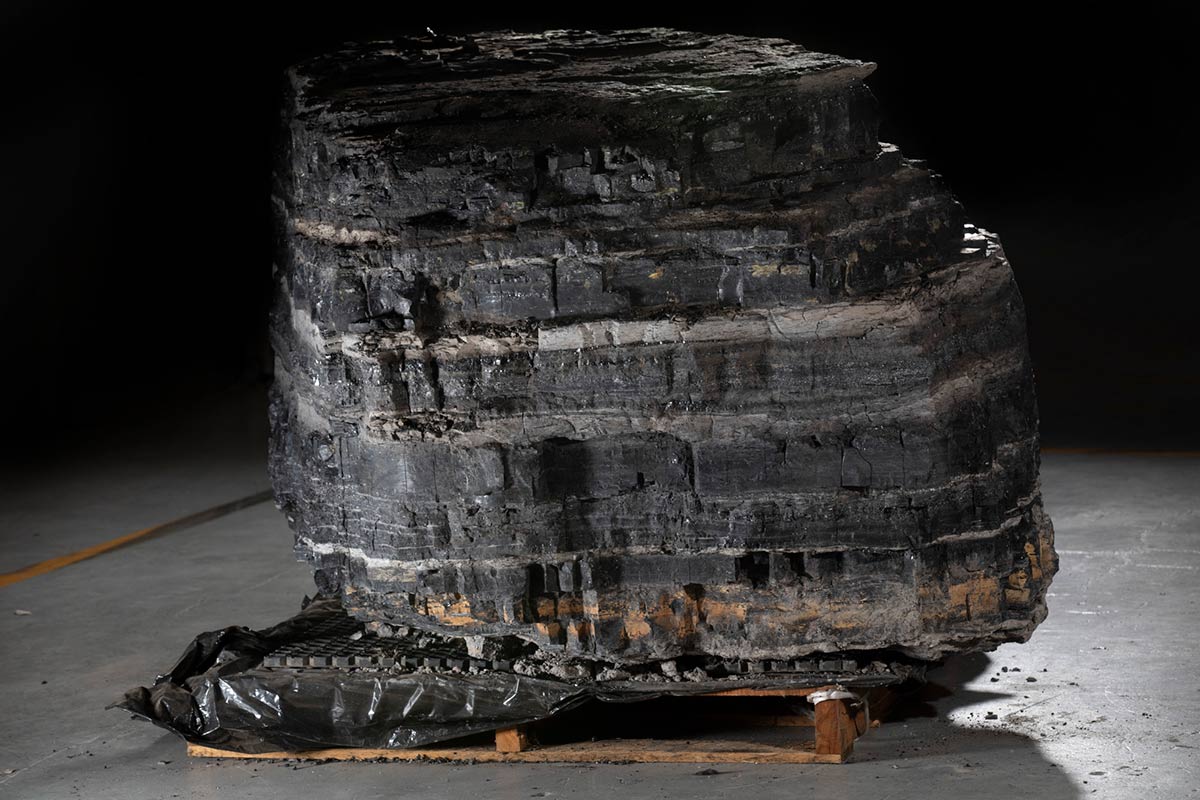In 2018 the coal mining company New Hope Group donated a 2.4 tonne sample of coal from its New Acland mine near Toowoomba in south-east Queensland to the Museum. The sample has now been installed in Great Southern Land, the Museum’s new environmental history gallery, due to open in late 2021.
The coal sample is about 170 million years old, and comprises the fossilised remains of plants and animals that lived when Australia was part of the Gondwanan supercontinent. These organic remains accumulated on the bed of a stream or lake. Nearby volcanoes added layers of ash. Waterborne clays and silts also settled, eventually forming bands of sedimentary rock.
The large coal sample sits in the introduction to the new gallery, alongside towering sculptures of bunya trees (Araucaria bidwillii), a fascinating and ancient species of great significance to First Nations communities across eastern Australia.
Forests of Araucaria trees – ancestors and relatives of bunya – cloaked Gondwana. When Australia broke away 50 million years ago and started drifting north, increasing aridity caused a great contraction in the distribution of Araucaria trees to rainforest enclaves, such as the Bunya Mountains near Toowoomba.
The Museum asked palaeobotanist and Hon. Associate Professor Mike Macphail from the Department of Archaeology and Natural History at the Australian National University to analyse a sample of the coal. By identifying pollen and spores, Macphail was able to list some of the plant species that grew in the location where the coal formed.

He explained that pollen is immensely durable, enabling it to survive the rough and tumble of the world, as it pursues its fertilising mission. Within a sample of the coal, Macphail identified pollen from Araucariacities australis-fissilis, a relative of modern bunya.
The New Acland Coal Mine lies a mere 50 kilometres from the Bunya Mountains, where the towering bunyas hold living memories of the 170 million-year-old pollens hidden in the dark coal.
You may also like


